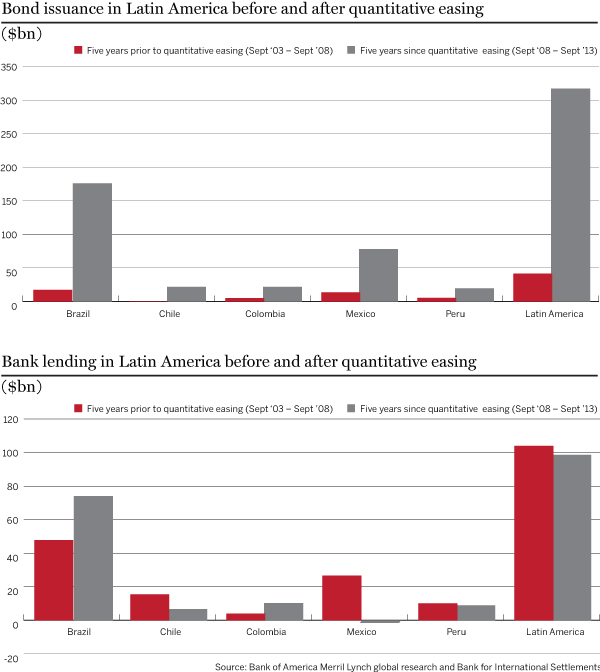Figures from Bank of America Merrill Lynch and BIS show that bond issuance in Latin America increased exponentially in the years following the launch of the US Federal Reserve’s quantitative easing programme.
As with other emerging markets, Latin America has been left exposed by the tapering of the US Federal Reserve’s stimulus package. But just how much did quantitative easing (QE) affect bond issuance in the region over the past few years?
Data from Bank of America Merrill Lynch and the Bank for International Settlements (BIS) compares bond issuance in Latin America in the five years before QE (September 2003 to September 2008) with the five years after (September 2008 to September 2013). And the effect is dramatic.
Brazil, for example, saw a 912% increase in bond volumes after QE to $176bn. Mexico also witnessed a surge in bond issuance, up 479% to $78.2bn. The value of bonds issued in Latin America as a whole increased 667% to $317.4bn.
As a reference, Bank of America and BIS also charted the change in bank lending over the same period, which was far less dramatic. Bank lending in Brazil in the years following QE was up 55% to $74.1bn compared with the five years before. Colombia also saw a spike in bank lending, up 158% to $10.3bn. But bank lending in Latin America as a whole was down 5% to $98.6bn after the US rolled out its stimulus package.



